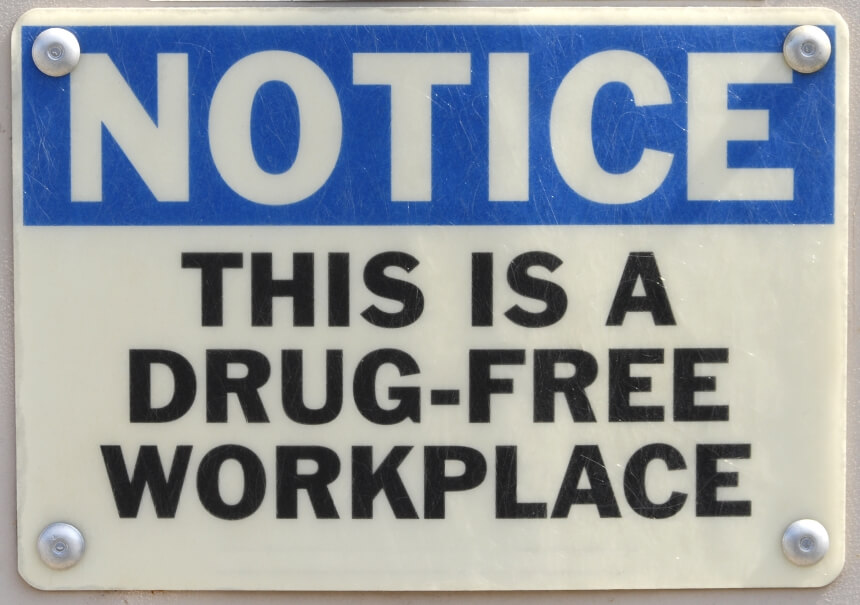
Educating employees about a new drug and alcohol policy is one of the most important steps an employer can take to maintain workplace safety. People need to understand the effects that illicit drugs, prescription drugs and alcohol can have on the ability to manage work duties in a responsible and safe manner. Communicating the policy is as important as developing the policy because a policy is virtually worthless if employees are not informed. Employers have several communication strategies they can employ that can convey the message of zero tolerance to employees far and wide.
One of the first considerations is overcoming worker anxiety. It is unfortunate, but instituting drug and alcohol policies can initially bring anxiety for a couple of reasons. First, people who are using substances realise they have a much greater chance of being caught once a random testing program is in place. Second, some people assume the program is all about “catching” workers or learning about their private lives or regulating their activities. It is easy for any new policy to generate anxiety even when workers have nothing to fear because change brings the unknown. Therefore, the first introduction of a new drug and alcohol policy should convey the message that the employer believes its greatest asset is its people, that the focus is on ensuring healthy and safety of all workers, and that the policy brings many benefits to the workplace.1
Building a Zero Tolerance Case
The format for presentation of a drug and alcohol policy can emphasise the “why and how” of zero tolerance for substance use in the workplace. Beginning with the big picture of alcohol and drug use in Australia, the discussion can then move into the terrible consequences of substance use in the workplace. The presentation should not come across as fear-mongering, but rather an honest discussion of the problems workplace substance abuse can cause.
Step-by-step the employer builds a case for workplace values, a culture of zero tolerance, and worker safety and productivity. The causes of substance abuse can be reviewed so that workers learn to recognise the stressors that can lead to abuse. Workers can also learn about the signs of drug and alcohol us, but it is important to not create a culture of fear or one in which employees are encouraged to spy on each other or make assumptions. The policy can then be presented after laying the foundation for its importance.2 During policy and procedures presentation, employees can learn the important channels of communications for reporting personal issues or concerns about workmates as related to substance abuse or safety.
Communicate, Reinforce, Communicate, Reinforce...
The communication strategies can vary and are largely dependent on the size and structure of the organisation. A small business in Sydney may choose to have a companywide meeting, whilst a global organisation will need to take advantage of technology. One of the keys to successful policy implementation is reinforcement of the information. In other words, employers would not send out an email and consider the process complete. The policy should be introduced and then reinforced with follow-up communications over a period of weeks, followed by ongoing reminders and updates. Of course, new employees need to be fully informed upon hiring and then become part of the policy reinforcement process.
The types of communication strategies include:
- Holding employee workshops or information sessions
- Training managers and supervisors
- Including copy of policy with paychecks (if hard copies still printed)
- Adding articles and updates in employee newsletters
- Holding Periodic ‘refresher course’ training sessions
- Posting policy on company website (also lets community know)
- Sending emails to managers and employees
- Adding health fair booth dedicated to substance abuse
- Offering employee wellness seminars and programs
Policy reinforcement can be embedded in other activities like company wellness programs. Once communicated, it is important to follow through with actions, including starting the random drug and alcohol testing and reinforcing the policy. Policies are doomed to failure if they are communicated but no one follows through with implementation or reinforcement.
Informing the workplace about a new drug and alcohol policy does not have to create worker anxiety if it is communicated in a way that emphasises workplace safety and worker health. The process of implementing the random drug and alcohol procedures will also go much more smoothly if the policy groundwork has been carefully laid. It is critical to use the highest quality testing supplies to ensure results are accurate and reliable. CMM Technology can offer professional guidance on policy development and has a range of supplies to suit business needs.
References
1. WorkSafe. (2008). Guidance Note: Alcohol and Other Drugs at the Workplace. Retrieved 2011, from Department of Commerce - Western Australia: http://www.commerce.wa.gov.au/worksafe/PDF/Guidance_notes/Alcohol%20and%20drugs.pdf
2. Drug Arm National Office. (2007). Why worry about alcohol and other drugs in the workplace - for the employee. Retrieved from Drug & Alcohol Information Centre: http://www.drugarm.com.au/files/pdf/Drugs%20in%20the%20Workplace%20-%20for%20the%20employee%20ltrhd.pdf
Categories
Archive
- February 2022
- October 2021
- June 2021
- November 2020
- October 2020
- June 2020
- March 2020
- February 2018
- December 2017
- August 2017
- February 2017
- September 2016
- August 2016
- October 2013
- September 2013
- July 2013
- May 2013
- February 2013
- December 2012
- November 2012
- August 2012
- June 2012
- February 2012
- December 2011
- October 2010
